The French Institute of Athens might better have been named the French Institute of Greece for it has nearly 30 annexes in the capital and throughout the country which have nurtured several generations of Greek youth. During the past few months it has been celebrating its 50th anniversary and the festivities will continue during the course of the current year. Its overall syllabus constitutes the best ‘French ambassador’ for hundreds of Greeks.
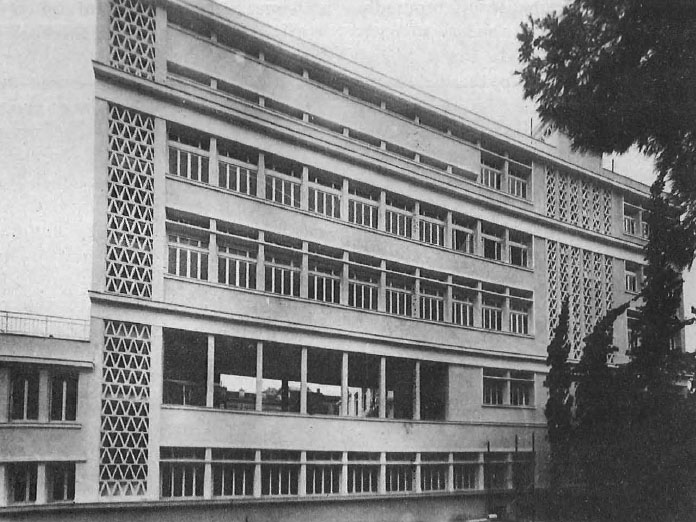
“The French Institute has two primary objectives,” says Director Jacques Trihoreau: “French language and presenting French culture through artistic and scientific events. Without letting up on our linguistic efforts, greater attention is being paid to subjects such as finance, law, science and translation. These are the means through which we are preparing ourselves for living together in a united Europe.”
“I don’t want to abolish the traditions of the Institute which have always given emphasis to the astistic aspects of culture,” continues Trihoreau, “but I am convinced that our concept of culture has been greatly broadened.”
Citing as examples the recent holographic exhibition and discussions on the uses of lasers; a roundtable debate on economics; a conference on the subject of European television; and a collaboration with the Goethe Institute on German, French and Greek law, Mr Trihoreau concludes, “There has been a growing variety of subjects for presentation without neglecting the artistic ones.”
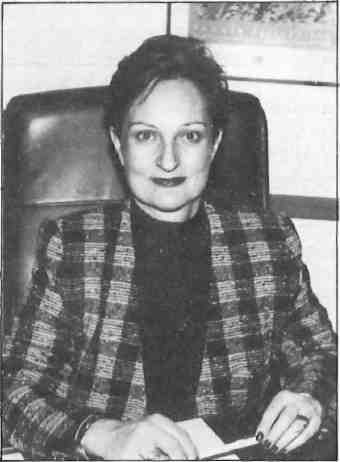
In his first floor office, Mr Marc Barrault, who is in charge of all artistic and cultural events, had this to say: “In the teaching section, priority is given to language. Though many people have the impression that cultural events are of primary importance, the truth is they are supportive. The success of the Common Market, which is such a central concern of ours, depends to a very great degree on the knowledge of languages.
Being a painter himself, Mr Barrault can speak intimately of the relationship between language and culture. “A language outside its cultural environment becomes isolated. Although we don’t place culture above language, we believe it is at least equally important. We want to present our language in all its aspects and in every field.”
The most recent cultural events at the Institute give an idea of the broad scope. An exhibition of 22 Greek artists of international standing – work covering a span of 60 years – all of whom were at some time granted scholarships by the French government, featured paintings by the surrealist Nikos Engonopoulos.
“Fifty Years of French Cinema” included some of the most important milestones in the history of film; a ballet performance; a roundtable discussion on contemporary French philosophy; a lecture by Cornelius Castoriades, the eminent Greek philosopher residing in Paris; an exhibition entitled “French Thought Since 1945”, consisting of 800 volumes by 250 writers; a concert of baroque composers by the Menestrel Music School; a series of lectures on photography; and a magician who amused adults and children.
Special events celebrating the anniversary of the Institute are being followed by others commemorating the bicentennial of the French revolution and the nomination of Paris as this year’s Culture Capital of Europe. Sports, too, are a part of the program.
The Saronic Gulf Regatta and the annual Spartathlon, the annual long distance foot race from Athens to Sparta, are supported in part by the French Embassy. Unfortunately, a soccer match between Olympiakos and the French Olympic team of Marseilles had to be canceled as the owner of the Greek team is the controversial former banker George Koskotas.
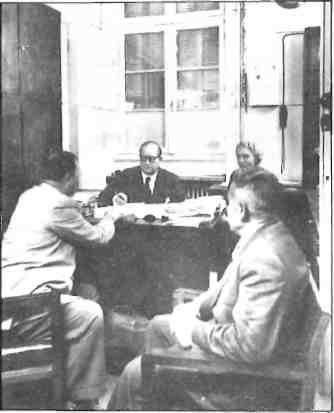
All the Institute’s crural events, of course, are open to the public free of charge, held in a friendly and relaxed atmosphere. The auditorium, with its comfortable blue velvet chairs and cheerful lighting, is a favorite resort of Francophile Athenians. High technology, simultaneous translation and movable microphones draw people still closer together. Mr Barrault is looking forward to the installation of two or more booths for instant translation of additional Common Market languages. All events are described in a well-organized, detailed and practical monthly bulletin.
The third member of the Institute’s administrative triumvirate is the charming Mrs Luce Rudent. She is the first woman to hold such a post here, responsible for the whole language teaching department, the Institute’s publications and the Translation Centre. “Greek children can start Institute courses from the age of nine. Though language studies are completed by around the age of 17, students may continue. It depends on the field of study. They can go on to the age of 99,” she adds with a smile.
“We regret being unable to satisfy the increasing demand for language teaching, however. On the other hand, we respect the Greek State on this issue.”
University-level education at FIA falls into three categories: commercial studies are sponsored by the Chamber of Commerce and Industry in Paris. A second category is devoted to French Literature and Language. A recent innovation is the Centre for Literary Translation. Teaching here are four eminent translators of French to Greek: Pavlos Zannas, Filippos Drakondaidis, Petros Papadopoulos and Christos Lazos. The Centre’s monthly publication “is a new periodical, in French and Greek, devoted to the promotion of both languages’ literature, past and present.
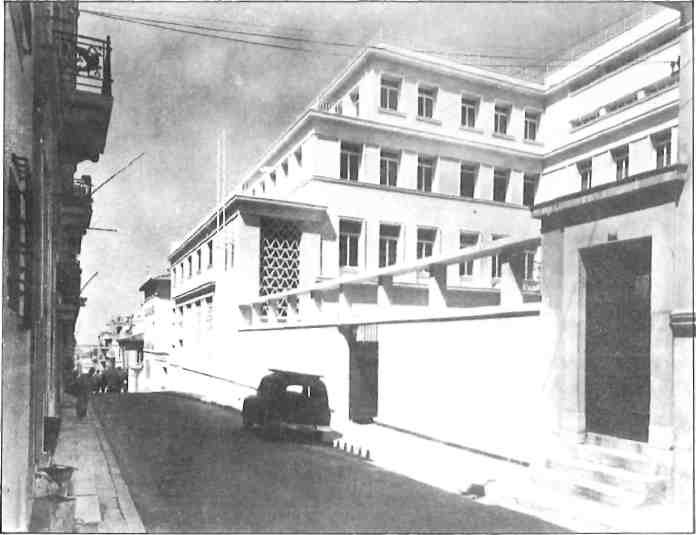
“We prepare our students not only in Greek and French, but in German and English as well,” says Mrs Rudent. Recently, an agreement has been reached with the University of Strasbourg to accept graduate students of the CTL for more specialized work in translating and interpreting.
Mrs Rudent has a very explicit approach to the system and methods of teaching language. “Our method is logic,” she explains, “but the sort of logic employed in teaching French depends very much on the age of the student, the cultural environment and other factors. We are therefore trying to present a variety of different methods to our clientele, sometimes with excellent results.”
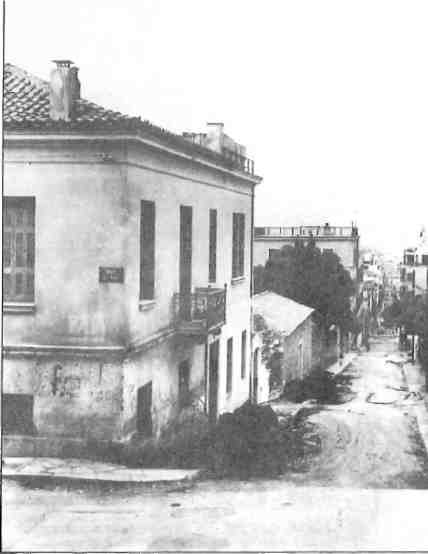
Above all, she refers to a book method written by FIA professors which has been so successful it is being applied in the teaching of Intermediate French throughout the world.
Another responsibility of Mrs Rudent is the printing press. To show this, she took me to a lower lever of the building, threw open a door, and suddenly we were standing before a highly polished, perfectly kept press such as those one sees in old engravings. It is astonishing that this working antique is still producing things of beauty after half a century. Petros Papadopoulos, who is in charge here, has in Mr Barreault’s words “a man-woman relationship” with this machinery which he manipulates so skillfully.
From it have appeared publications which are monuments of scholarship. These include translations from Rabelais to Solomos, Kazantzakis and Seferis, as well as critical studies in literature, history and language. It has also produced Faidon Koukoulis’ remarkable six-volume authoritative work on Byzantine civilization.
Even the Academy of Athens publishes its Lexicon of the Greek Language of Southern Italy here. Yet the most precious publication of the press, and the life work of Neoklis Koutouzis, is Bulletin of Greek Bibliography, a catalogue of every publication printed in Greece – unique to Greece – and issued without interruption for 25 years. “Universities everywhere subscribe to it because it has a worldwide reputation, which adds to our reputation too,” Mrs Rudent says with pride.
Recently, it must be admitted, editorial activity has slowed down due to mechanical obsolescence. The Institute hopes to replace its ‘relic’ with high-tech machinery, and then the miraculous little press can become a treasured museum piece.
Two new sections of the F1A are helping Greeks prepare for the challenge of 1992. One offers any young person with adequate knowledge of French a series of special courses which prepare him or her for entrance examinations to any French university in the field of his choice. The second section, in scientific and technical terminology, has been established for Greeks who use French in their industrial or specialized jobs.
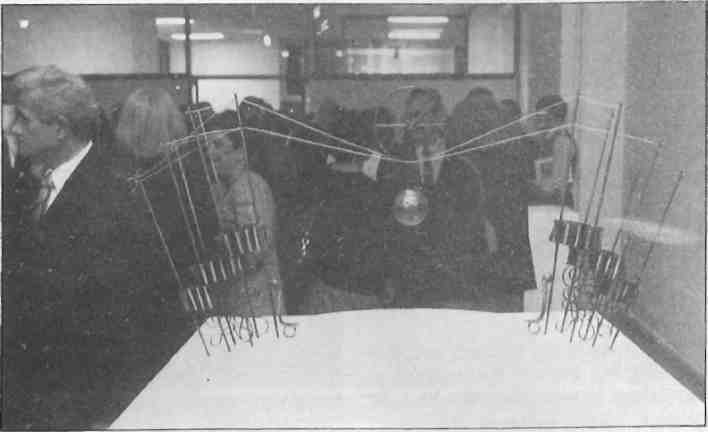
While the FIA faces the future creatively, it respects its roots; hence these months of celebration commemorating the Francohellenic Cultural Agreement signed 50 years ago which brought the Institute into existence. Formal teaching of French, however, began around 1907 when the French Archaeological School moved into its present premises at the corner of Sina and Didotou Streets. Today it comprises an attractive complex of buildings, and the FIA occupies a whole block.
In its early years, the Institute’s “spiritual” father was Octave Merlier, the great scholar and philhellene who was also the translator of Sikellianos and Papadiamantis. He was succeeded by Roger Milliex.
Both men took their Philhellenism so seriously that they fell in love with and married Greek women. Melpo Logotheti met Merlier in Paris where she was working with (he great Hellenist Hubert Pernot. They married, then settled in Athens, where Melpo dedicated her career to collecting literature and music of “lost homelands” gleaned from the Greek population which had fled Asia Minor. She created the Archives of Folk Music in 1931 and Centre of Asia Minor Studies in 1935, an institution which remains vitally active today. Tatiana Gritsi Milliex, a leading contemporary writer, was a student at the FIA when she met her future husband.
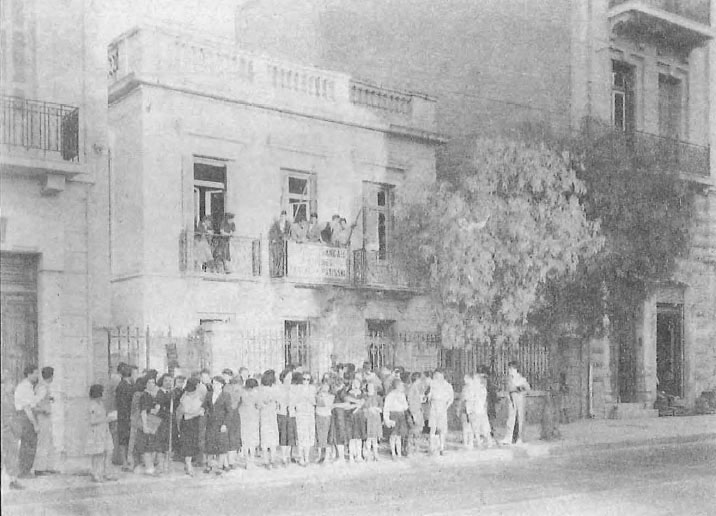
The present premises of the Institute are modern. The old two-storey neoclassical house on Sina, together with the Merlier home on the corner, have made way for the present impressive and spacious edifice. Work began in the early 1960s from designs by Herni Ducoux in collaboration with the Greek architect Bonis. The monumental door which they designed, but which is no longer used, is composed of glass plates, like sheets of parchment, on which are inscribed the names of great poets and writers of the past. The Sina Street facade is ennobled by the sculptural work of Paris Prekas. Today one enters by a large gate opening onto a courtyard off which radiate passageways leading into the various buildings grouped around it.
In the early 1970s, architect Sthenis Molfessis drew up plans for the present central building with its charming bistro swarming with students all day, the adjoining exhibition hall and the auditorium. Melfessis also renovated the Merlier Lending Library on the third floor. With its 50,000 volumes, classified by the Dewey system, its huge collection of records, cassettes and periodicals, its children’s corner and its predominately orange decor, it is one of the most agreeable and best organized libraries in Athens. The architect is now renovating annexes in other parts of Greece, including the beautiful building designed by Ziller in Kalamata which was seriously damaged in the 1986 earthquakes.
The French Institute here is the largest in the world. Because of this prominence, its director is at the same time cultural attache of the Embassy, even though the FIA is autonomous and not financially dependent on it. This is what Mr Trihoreau means when he says he wears two hats. And Greeks warmly welcome him in both chapeaux.







